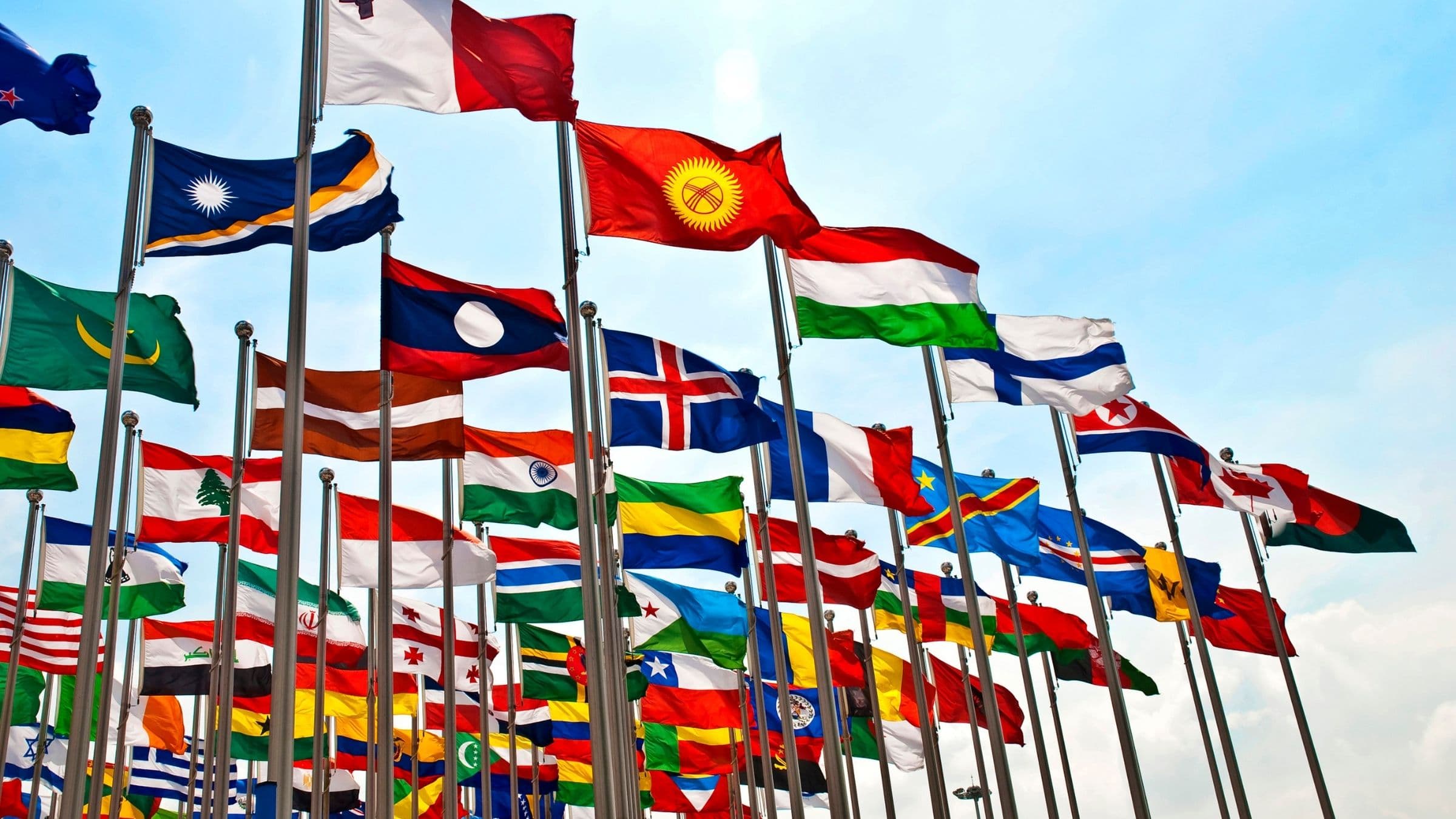
COUNTRY PROFILE
Discover more about the Dutch market including overviews about the retail, foodservice, and food-processing sectors. Events, resources, and more are linked throughout the profile.

1st
processed food export market in Europe

$1.2 Billion
total of U.S. processed foods imports in 2023

12% Increase
of U.S. imports in 2023
Euromonitor reports that the economy in the Netherlands expanded in real terms in 2022, driven by increasing private consumption and external demand. The increase in exports added to the growth as well, as exports of goods make up for over three quarters of the country’s gross domestic product (GDP). In 2023 however, elevated inflationary pressures and tightening financial conditions are set to undermine business and consumer confidence globally, raise uncertainty and weigh on the country’s economic outlook.
Focus Economics reported that in politics, following the victory of the populist right-wing Party for Freedom (PVV) in general elections on November 22, 2023, the political parties have struggled to reach a coalition agreement. Centrist parties could form a government that would be supported informally by the PVV from the outside, which would ensure economic policy continuity.
The Netherlands is a highly open and connected economy, with international trade playing a critical role in its development. Rotterdam, Europe’s largest container port with total throughput of 467.4 million tonnes in 2022, is expected to further enhance the country’s position in the global market. As global trade recovered the value of goods exported by the Netherlands increased by 11.4% over 2022, supported by the substantial growth in exports of machinery and electronic equipment (in absolute value terms).
In 2023, the Dutch population totaled 17.4 million (CIA World Factbook Est.) and is forecast to continue to grow annually by over 100,000 people until 2030. The median age was 42.2 years in 2023. Roughly a quarter of the population in 2030 will be 65 years and older (it was 20.8% in 2023). Not only is this group of consumers growing, but they are also expected to be more affluent, more active, and more experimental with food than ever before.
USDA’s Foreign Agricultural Service, FAS, Office of Agricultural Affairs or “OAA”, located in The Hague, hereinafter referred to as FAS Post The Hague, reports although the Netherlands is a small country geographically, it is the gateway for U.S. products into the European Union (EU) due to the presence of the Port of Rotterdam, Schiphol Airport, the confluence of two major European rivers, and an excellent road and railway infrastructure. It is the EU’s largest U.S. agricultural importing country and continues to be the second largest exporter of agricultural products in the world, after the U.S. These exports include products produced in the Netherlands as well as imported products that are re-exported, often after further processing and adding value.
In 2023, the Netherlands remains the largest U.S. processed food export market in Europe and the 7th largest overall, totaling just over US$1.2 billion, growth of 12% and an all-time record high.
Top processed U.S. food products exported to the Netherlands in 2023 included:

$27.6 Billion
estimated total of retail sales of packaged food products in 2023

24.7%
increase in retail sales since 2019

$32.1 Billion
estimated in sales of packaged food products by 2028
Euromonitor reports that the packaged food retail sales value reached US$27.6 billion in 2023. That represented a growth of 24.7% or over US$5.4 billion since 2019. They also predict growth of 11.7% by 2028, amounting to nearly US$3.3 billion since 2024 for a total packaged food value of nearly US$32.1 billion.
High growth categories in the forecast include:
FAS Post The Hague reports that the Dutch retail sector is rather consolidated, employing over 300,000 people and operating in an estimated 4,500 stores. The Dutch retail food sector is relatively consolidated, with the two largest food retailers, Albert Heijn and Jumbo, controlling almost 60% of the market. Price discount stores, including Aldi, Lidl, and Dirk, have a combined market share of almost 20%.
The sector’s turnover for 2022 was US$48.7 billion. Due to the increased costs of living, consumers are looking for products on sale and moving from branded products to private labeled products. Cheaper further processed variants are gaining popularity as well as discount stores. Interest in shopping for groceries on-line continues to grow.
Roughly 75% of all food retail outlets are full-service supermarkets, operating on floor space between 500 and 1,500 square meters and located downtown in cities or residential areas. Full-service supermarkets have responded to the need of the Dutch to have these supermarkets close to their homes and focus on selling food stuffs, their non-food items are quite limited. The remaining 25% and growing mainly includes convenience or ‘on the go’ stores including SPAR City, Jumbo City, COOP Vandaag, and AH To Go, located near office buildings, schools/universities, train/metro stations, and high traffic areas in the city centers. The Netherlands traditionally has only a few superstores like Albert Heijn XL and Jumbo Foodmarkt which are often conveniently located in shopping malls or industrial parks.
A selection of the food products that food retail companies place on their shelves are produced in countries outside the European Union (EU). Retailers do not import these products themselves but work with local, and often specialized, importers who are specialized in international trading and experienced in making sure these foreign products comply with local import requirements and standards. Retailers increasingly have their stores divided into different categories.
For each category, they will have two or three preferred suppliers responsible for supplying the full range of products within that category. This way, the retailer negotiates with just a handful of suppliers for produce, meat products, seafood, groceries, beverages, bakery products, etc. For the international specialty products (covering branded retail ready U.S. products) area within supermarkets, retailers usually work with only one or two specialized importers who are responsible for selecting products and filling those shelves. Dutch department stores (e.g., Bijenkorf) and non-food retail chains (Xenos, HEMA, Normal, and Holland and Barrett) are the only retail outlets that will buy directly from U.S. exporters.
Several retailers in the Dutch market have developed two private labels: one focusing on price and the other on enhanced quality. Consumers are discovering the good value-for money that private label brands are offering and that they can be an economical alternative for branded products. Private labels appear to fare well both in years of recession and in more prosperous times. The profitability of private label products has fueled retailers’ interest to offer more (e.g., gluten-free, healthy, and organic) and move into new areas for private labels, such as bakery and cosmetics.
In 2022, total Dutch imports of agricultural and related products were valued at US$112.9 billion. Imports from the U.S. totaled US$4.2 billion, up by 27% due to higher imports of soybeans, wood pellets, industrial fatty alcohols, and distilled spirits. The U.S. was the ninth largest supplier of consumer-oriented products to the Netherlands, after several EU Member States, Brazil, and the U.K. Total Dutch imports of consumer-oriented products ($52.9 billion) were up by 5%. Imports from the U.S. were valued at US$1.5 billion, dominated by imports of tree nuts, soup and other food preparations, and beef products.
FAS Post The Hague reports that the following sectors offer opportunities for new sales: alcoholic and non-alcoholic beverages, healthy food snacks, tree nuts, so-called super fruits, pulses, food products with a special certification (organic, sustainable, free-from claim, etc.), and innovative products with a story to tell.
FAS Post The Hague reports that the Dutch hotel, restaurant, and institutional (HRI) foodservice industry sales in the Netherlands rebounded in 2022, valued at US$15.6 billion, and exceeded the pre-pandemic (COVID-19) levels. In 2022, sales in all segments saw an increase but the limited-service restaurants and cafés and specialist coffee outlets sales grew the most, profiting from the scaling down trend among consumers.
HRI foodservice sales via home delivery exploded during the pandemic and continue to stay strong as consumers are looking for affordable convenience and are leading more home-centered lifestyles. The HRI foodservice industry is also facing challenges, including a tight labor market, rising prices of inputs, and competition from food retail stores which are now offering more prepared options and grab-and-go meals at their stores. Foodservice sales are expected to continue to grow in 2023 albeit at a slower pace.
The demand is growing for easily accessible, convenient, healthy, and nutritious food products, albeit at an affordable price. Driven by Millennials and Generation Z, demand is also growing for instant delivery of foodstuffs while sales of packaged food in smaller portions are also up. The Dutch are increasingly eating alone, eating out, and on-the-go. International cuisines that are gaining popularity include those from Israel, Lebanon, and Syria.
Consumer consciousness about how food products are produced is growing. Total consumer spending on foods certified as sustainable grew by 12% in 2021 to an estimated US$10 billion. The share of sustainable food compared to total spending on food grew from 17% to 19% in 2021. Another trend in the Netherlands is the strong interest in plant-based diets, supported not only by an increase in the number of vegetarians or vegans but also a general shift in consumer lifestyle.
According to Euromonitor, the recovery of the HRI foodservice market from the COVID-19 crises continued in 2022. Total sales were valued at US$15.3 billion in 2022, up by 30% compared to 2021, and exceeded the pre-pandemic 2019 level for the first time. Last year, sales in all segments saw an increase but the limited-service restaurants and cafés and specialist coffee outlet sales grew the most and profiting from the scaling down trend among consumers to spend less.
With all COVID-19 restrictions lifted in 2022, consumers returned en masse to HRI foodservice outlets and picked up the social life they led prior to the pandemic. Consumer spending increased quickly during the first three quarters of 2022. “By the fourth quarter of last year, the effects of high inflation (10% in 2022) and rising energy costs and price increases, in part due to the ramifications of the war in Ukraine, became more visible in the Netherlands,” according to Euromonitor’s Consumer Foodservice Report of March 2023. “As consumer confidence dropped, households once again became more price-sensitive and careful with their spending. As a result, many consumers traded down, from full-service to limited-service restaurants, for example.”
Unlike the retail sector, the Dutch foodservice industry is fragmented and has many independent players. This is especially the case for cafés/bars, restaurants, cafeterias, and street stalls/kiosks. The majority of limited-service restaurants and delivery outlets, however, are consolidated and often part of an international chain. Well-known examples of international limited-service restaurants active in the Netherlands include McDonald’s, Domino’s Pizza, KFC, Burger King, Subway, and New York Pizza.
Chains from the U.S. are popular in the Netherlands because of their efficiency and consistency, but also because the meals are affordable. They continue to be successful because they have been able to respond to changing consumer demands and now, for instance, offer vegetarian and healthier food products. More U.S. chains more recently opened outlets in the Netherlands, including Dunkin’ Donuts (coffee and donuts), Five Guys (burgers and fries), and Taco Bell (tacos, burritos, and quesadillas).
FAS Post The Hague reports that U.S. products present in the market which have good sales potential include nuts: almonds, peanuts, pistachios, walnuts, hazelnuts, pecans; seafood: salmon cod, halibut, scallops, lobster; fresh fruit and vegetables: sweet potatoes, cranberries; sauces and condiments; snack foods; California wines, craft beer; distilled spirits.
FAS Post The Hague reports that over 8,400 food companies generated net sales of US$98 billion in 2022. The industry has been a steady supplier of jobs in the Netherlands (152,000) and the number of food companies continues to grow due to an increasing number of small food companies. The industry is largely depending on imported (unprocessed) ingredients. The majority of its finished goods, however, are sold in foreign markets. The food processing has also been impacted by Russia’s invasion of Ukraine. High energy prices and rising prices for raw materials (coupled with increasing wages) have challenged many food companies.
The number of food companies continues to grow due to the continued growth of small food companies (with less than 10 employees). The majority of what the Dutch food industry produces is exported (US$46 billion in 2021), half to neighboring countries Germany, France, and Belgium. Conversely, the Dutch shopping basket is largely dependent on imports (US$28 billion in 2021), including fresh produce, grains, coffee, tea, cocoa, and spices.
The past few years have been challenging for the Dutch food processing industry. Many companies were negatively affected by the COVID-19 pandemic (e.g., social distancing measures, closure of HRI foodservice outlets, and global disruptions in trade flows). In the second half of 2021, the industry faced cost increases for agricultural raw materials, packaging materials, energy, and transport. Prices increased by as much as 40% for some raw materials, while energy costs increased by as much as 85%. Packaging materials, such as paper and plastic, were 6% and 12% more expensive than pre-COVID-19 levels, respectively, and buyers of food ingredients were confronted with rising prices for sea freight. Although various food processing companies were forced to increase their prices, the cost increase resulted in a decline in the industry’s value added and led to reduced profit margins.
The Dutch food processing industry is mature, well organized, and has access to nearly all food ingredients. Dutch food companies prefer to purchase food ingredients from specialized traders rather than sourcing directly from overseas markets, including the U.S. Only large and/or highly specialized food companies might opt to import ingredients directly from the U.S.
The meat, dairy, and fresh produce subsectors each accounted for roughly a quarter of the food processing industry’s turnover. Sales were driven by local demand as well as growing demand from other European markets. Increased attention to product reformulation and growing food awareness of more sustainable production procedures will continue to further shape the Dutch food processing industry in the years to come. Other consumer preferences continue to be affordability, convenience, and taste. Dutch food companies are always on the lookout for new food ingredients. Exporters from the U.S. compete directly with suppliers from European Union (EU) countries.
FAS Post The Hague reports that food ingredients present in the market which have good sales potential in this sector include food ingredients (food preparations and protein concentrates, essential oils, odoriferous substances, peptones and derivatives, and enzymes), fish fillets (frozen fillets of Alaska Pollack, cod, and hake), and nuts (almonds, peanuts, pistachios, walnuts, hazelnuts, and pecans).